Nicholas Haig – 8 March, 2018
All of which contributes to the dreaminess of the display; colonialism as seen through a milky filter. Again, the potential potency of this incident vis-à-vis, for instance, Benjaminian historical “messianism” is castrated. Rather than the driftwood serving to “torch” (or, at the very least, light some sort of bonfire within) the Suter, its repurposing has eviscerated its most brilliant function.
Nelson
Sally Burton
Pale History
5 November 2017 - 11 March 2018
I recently watched the mini-series Alias Grace, a Canadian Broadcasting Corporation adaptation of the Margaret Atwood novel of the same name. Alias Grace draws upon the 1843 murder trial of a 17-year old Irish-Canadian domestic worker, Grace Marks, who was convicted of colluding with another servant, James McDermott, of murdering both housekeeper Nancy Montgomery and their mutual employer, Thomas Kinnear. The novel was styled somewhat affectedly as “historiographical metafiction” when published, and although I have not read it I believe that if the TV show is even a mere rumour of the original then this also seems a fairly apt descriptor for the ‘celluloid’ translation. History—as retrospective accounting of (and for) the past—in Alias Grace is very much a thing for turning and for turning on.
Sally Burton’s exhibition, Pale History, also focuses on an event of 1843, The Wairau Incident. Known also as The Wairau Massacre, The Wairau Affray, and The Wairau Confrontation, the various fortunes of the name provide an object lesson in processes of historical re-scripting. At least ostensibly, the exhibition itself is also concerned with the production of history—that is, with the representation of the past.
Bringing together archival material, sculptural works, biographical sketches, contemporary commentary, artefacts, painted portraits and a painted map, the exhibition revolves around an operatic set-piece: ten life-sized and monochromatic skeletal figures fashioned from driftwood and tapa cloth, alongside what looks to be a MDF and papier-mâché model of a cannon with a red sheet billowing from its mouth. The figures are modelled on the principal players in the Wairau Incident and the ‘frozen moment’ is the conflagration’s precipitating ‘spark’—the (possibly accidental) shooting of Te Rongo, the wife of Ngāti Toa chief, Te Rangihaeata.
Like most colonial ‘exchanges,’ The Wairau Incident is made up of a complex raft of cross-hatched concerns and reverberations. The first major armed confrontation between Māori and colonials since the signing of Te Tiriti o Waitangi/The Treaty of Waitangi, it resulted in the loss of 26 lives—22 of them Europeans, including Arthur Wakefield, Resident Agent of the New Zealand Company in Nelson.
According to local historians John (Ngāti Tama, Te Atiawa, Taranaki, Ngāti Toa Rangātira) and Hilary Mitchell, who provide the exhibition’s most incisive contextualising contribution, the incident was essentially occasioned by the New Zealand Company’s unscrupulousness. A claim on land in Wairau (in Marlborough) was disputed by Ngāti Toa who, following attempts at redress via the auspices of the colonial authorities, took matters into their own hands. As John and Hilary explain:
Having exhausted their attempts to resolve the matter by due process (using their new rights as British citizens under Article 3 of the Treaty), Ngāti Toa travelled to the Wairau. There they carefully removed the surveyors and their equipment, making sure there was no damage, and paddled them back to their ship in Cloudy Bay. The chiefs burnt the shelters, rods and stakes the surveyors had crafted from local materials.
When the New Zealand Company party returned to Nelson, a complaint was laid and arrest warrants issued for the Ngāti Toa chiefs Te Rauparaha and Te Rangihaeata. The Nelson Police Magistrate, Henry Thompson, and Arthur Wakefield assembled “a group of ill-trained and ill-equipped settlers, surveyors and labourers and sailed to Wairau to execute the warrants.”
The two forces gathered on either side of the Tuamarina Stream. Despite the intercessionary efforts of Te Rauparaha’s nephew, Rawiri Puaha, the colonial company was ordered forward. It was then that Te Rongo was shot and Ngāti Toa forces retaliated. The Nelson party was swiftly overwhelmed. Nine of the settlers were killed in combat and thirteen executed by Te Rangihaeata in retribution for Te Rongo’s slaying.
The Mitchell’s write that the Wairau Incident ‘changed everything and its effects were extensive and long-lasting’:
The pattern established at the Wairau of European greed for land, callous overriding of Māori rights to retain ownership of their lands guaranteed by Article 2 of the Treaty, and a refusal to negotiate continued to dog New Zealand’s colonial history.
‘Wairau’ has ricocheted wildly since the 17th of the June 1843 and remains a historical flashpoint.
Burton, who is Pākehā, has long engaged with the region’s history in her art practice. In her introductory note she explains that a personal connection drove the creation of the exhibition, in that the road she lives on is named after the surveyor John Cotterell, whose report on Ngāti Toa activity in Wairau was instrumental in mobilising the colonial force. Cotterell was subsequently killed in the affray. For Burton, the intention of Pale History was to provide ‘people with an opportunity to reflect on the facts, question who they are and where they belong’ [1].
By all accounts, Pale History has been hugely popular. The convergence of a momentous event, an affecting story and a soft-focus approach—a cross between a restrained public service announcement and a sort of hazy empirical mythologising—makes this unsurprising. That it is serving to enlighten Nelson’s historically challenged audiences (which I don’t exclude myself from) should also be cause for celebration.
Rather than rejoice, what I am concerned with is the question of what Pale History is ‘the art of’, if, as my ‘hunch’ would have it, it cannot be (strictly) assessed as art [2]. Though, as Carolyn Christov-Bakargiev suggests, “the riddle of art is that we do not know what it is until it is no longer that which it was” [3]. Maybe when it is no more—or has transmogrified, somehow—the question will be (or will seem) redundant.
More generally, what I am also interested in are what ‘situational truths’ can occur or are allowed to occur in the ‘new’ Suter, the gallery where the sun always shines. And how is the institution, following its architectural reinvention, going about framing its wares? And, in terms of artistic practice and the representational function of the gallery, what is necessary, here and now [4]?
In other words, is Pale History a timely intervention or does it function to domesticate potential (future) ‘radicalism’? Is the Wairau Incident now a part of the local public’s historical lexicon and ready to burst into flame at a later date, or has it been neatly folded into the routine dramas that comprise our daily lives? My expectation that the exhibition should offer emancipatory threats is no doubt a bit witless. Why expect so much? Particularly here in this gimcrack backwater with Miamian aspirations, the town which in its rush to either erase or sanitize the past condemns us to an ever paler future. I still hold out hope because I believe that even here it is possible, as Christov-Bakargiev puts it, ‘to redirect and alter the imaginary constellations to which we are subjected’ [5]. ‘Things’ can be otherwise.
What I am troubled by in this instance are not necessarily the wider social effects of the exhibition but what such an exhibition does to the gallery (and to the idea of the gallery), to the space of artistic practice, and to the public expectation of what art should do and be. As in, the sense I have is that Pale History looks politically engaged while behaving (being) otherwise; a charade of well-meaning but hollow absorption.
As folksy caricatures, there is something almost disturbingly unthreatening about the figures [6]. The driftwood was collected by Burton in and around the beaches and estuaries that embrace the edge of the Waimea Plains, and in an RNZ news item concerning the exhibition, she explained:
I wanted to make them look as if they’d been tossed up by the Pacific Ocean with their mana intact, somehow, even though they are these strange, kind of skeletal figures […]
The implications with regard ideas of colonialism are unambiguous: the ‘players’ were simply flotsam that washed up here as if by chance [7].
Meanwhile, two of the sculptural works are mirrors framed respectively by unfurling (flowering) muskets and carved toki. How to read this? Is it simply a heavy-handed way of getting people to feel implicated? A means of examining “one’s self” in the historical field from both a Pākehā and Māori perspective? As if by simply gesturing to a specific cultural artefact one can see differently.
All of which contributes to the dreaminess of the display; colonialism as seen through a milky filter. Again, the potential potency of this incident vis-à-vis, for instance, Benjaminian historical “messianism” is castrated. Rather than the driftwood serving to ‘torch’ (or, at the very least, light some sort of bonfire within) the Suter, its repurposing has eviscerated its most brilliant function.
Suter curator Sarah McClintock has described Pale History as a “three-dimensional history painting” which allows visitors to “reflect on the path that led to this violent confrontation and where is has taken us as a nation.” In McClintock’s short essay that accompanies the exhibition, titled ‘An Unfixed Story’, she writes:
In keeping with the complex nature of the Wairau Incident, Burton has created an installation that embraces the intricacies of the event. […] Burton has brought together text and images from multiple primary and secondary sources, collaging them together to highlight the manner in which history is reconsidered as facts come to light and our perspective as a society evolves. Rather than revising, Burton draws our attention to history as an unfixed story. Some events are lost to time, motivations are often unknowable and multiple viewpoints are sacrificed for the telling of an easy narrative. The history we are told is often a paler version of reality, one which is confusing, messy and uncontainable. Burton’s strength is her uncompromised approach to interpreting the best and worst of our ‘pale history’.
McClintock’s framing, which is at once astute and dissembling, is simply not matched by the physical content of the exhibition. Although certain the title is self-knowing, I am also sure that self-knowledge is never an assurance against wrong-headedness.
Perhaps, however, I am overlooking the transformative potential of the “re-enactment.” That is, by adding more layers of meaning, unwarranted closure can be avoided. But what Pale History stages is difference dressed up as mobility of meaning. Of course, I want it both ways: to be convinced without closure.
What is most striking about Pale History is the absence of mystery: it is all spelled out. Despite McClintock’s assertions, there seems to be nothing to ‘get’ other than the “facts of the matter” [8]. The title and the resonance of the word pale is the one element that inserts a bit of frisson. A strange thing, a title that somehow outstrips (and then bludgeons to death) the work on display. But the promise of richly variable modes of understanding is there in the title.
Rather than simply re-hashing the event, what of an actual statement of position? Rather than the even-handed (and fundamentally depoliticising) approach adopted (a spark for potential further learning etcetera), what of a “pale history” which is precisely that: an account of the institutional racism that still pervades the region. Or, better (worse) still, a “neo-Nazi” history of Te Tau Ihu o Te Waka-a-Māui: a real nasty pale history.
What in this instance concerns me more than possibility for specious self-congratulation is the potential for solemn reflection to masquerade as political awakening. It is quite possible to awake into nothing. What is it other than an illustration of an event (though one interspersed with heavily burdened metaphors)? As a potential locus for community revelation the problem, as I see it, is not that difference is not accounted for but that it is so neatly enunciated. There’s little sign, for example, of Hal Foster’s ‘anarchival impulse’ at work and little sense, despite the premise, that history is built rather than exhumed. The figures are resolutely odd, but the language (visual and otherwise) is entirely matter-of-fact. The historical reckoning is credulous and there is little sense of the past, its recall, and its representation being a problem.
In part because of the marionette-like figures (who could have emerged from a World of Wearable Arts extravaganza) and the cannon’s bizarre billowing sheet, the incident is turned into something of a comedy affray: a misguided and rag-tag colonial force, an accidental gun-shot, a swift comeuppance. Perhaps it needs to be seen in such light, but the emphasis on individual foolishness clouds the political horizon of the event; it would be easy to perceive the colonial project (imperialistic, capitalistic etc.) as a series of blunders and mishaps. Which it was, absolutely, and was not, categorically.
It needs noting that it really is not as straightforward as I’m making out; there is certainly a good deal of rich and evocative do-si-doing going on and as an introduction to the Wairau Incident, particularly via John and Hilary Mitchell’s essay, it performs an admirable pedagogical service [9].
My feeling though is that it is simply not obscene enough. Where are the bodies—the bloody mess of (figurative, even) bodies—politicised in the activity of conflict? Where is the carnal and abject dimension of conflict and power? Of course, this could very well be the point; a whitewashing not only of the “knowable” past but of its unmentionable innards.
In an article discussing the work of E. M. Forster, Julian Barnes writes:
I don’t like art — especially theatrical art- -whose function seems to be to reassure us that we are on the right side. Sitting there complacently agreeing with a playwright that war is bad, that capitalism is bad, that bad people are bad. “You don’t make art out of good intentions,” is one of Flaubert’s wiser pronouncements.
I disagree absolutely in principle with Barnes, but here it would seem a reasonable point.
My sense is that Burton wanted it all ways: to create an exhibition affectingly estranged and dispassionately moralising; to offer up profound infotainment. A white-wash of committed evasions. An art, again, of good intentions. But then again, could it be that the obscenity I am after is found in the stammering “too muchness” of its various cock-eyed component parts? Perhaps this “all ways” is precisely the wonder of the thing.
Although unrefined, I simply wanted it darker; a bonfire lit, the sun blotted out by ash [10]. If even for a moment.
Nicholas Haig
[1] It needs acknowledging that Burton’s partner died during the production of Pale History. Despite the at times heightened tone, I hope that my review is able to be taken in the spirit in which it was written; that is, as an attempt to engage critically with some of the exhibition’s implications.
[2] I also need to acknowledge the various friends who offered alternate coordinates for this piece. That I should have listened more attentively goes without saying.
[3] Christov-Bakargiev, Carolyn. 2012. “Letter to a Friend.” In dOCUMENTA (13): The Book of Books, edited by Carolyn Christov-Bakargiev, 74-79. Kassel: documenta and Museum Fridericianum Veranstaltungs-GmbH, 79.
[4] Of course, none of these questions can be adequately (or even provisionally) answered here, but I hope others will be prompted to pick them up.
[5] Christov-Bakargiev, 2012, 79.
[6] I am unable to read the driftwood figures without thinking that they cannot but be a parody of artistic practice in Nelson; every garden at one time (less so today given the prevalence of “evacuated tastes”—that is, minimalism without the politics) would have featured such things.
[7] The author of the RNZ story, Tracy Neal, wrote that the exhibition:
[…] depicts a trace of the grief the settlers grappled with. [Burton] said many were “press-ganged” into the confrontation at Wairau, and the stories of loss were now pouring out.
It was undoubtedly a devastating incident for the settlers, but the potential for these reformulated stories of trauma to be co-opted and misused remain high. The question of how—given the knotted power relations—to express solidarity with the working class settlers while holding the colonial project to account remains very much a live one. The jumbled empathy on display in Pale History is certainly one way of approaching this impasse.
[8] See, once again, Burton’s statement that “Pale History provides people with an opportunity to reflect on the facts…”
[9] I have a definite feeling that not only have I got Burton’s exhibition quite wrong, but that my antagonised position has little to do with the work itself and rather more to do with my unease at the current trajectory of the Gallery.
[10] Which is not the same as saying that I seek to wish away complexity or mixed motives: there is (or at least, can be) a significant difference between multiplicity and complexity.
Recent Comments
Elizabeth E. Mitchell
I congratulate and applaud the Suter for showing this work. We are all the inheritors of oppression. Ill gotten gains ...
Elizabeth E. Mitchell
Without engaging Nicholas Haig’s complex and confusing arguments about Pale History, I would like to offer my own reaction to ...

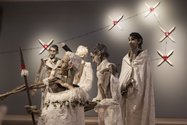
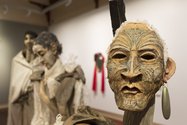


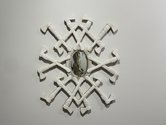
 Advertising in this column
Advertising in this column Two Rooms presents a program of residencies and projects
Two Rooms presents a program of residencies and projects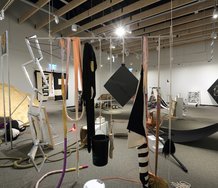
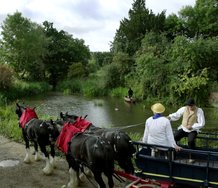

This Discussion has 2 comments.
Comment
Elizabeth E. Mitchell, 8:37 a.m. 10 March, 2018 #
Without engaging Nicholas Haig’s complex and confusing arguments about Pale History, I would like to offer my own reaction to the exhibition which I sent in a letter to the Suter and to the Nelson Mail:
...I was moved and touched. I felt the sins of our Pakeha ancestors were admitted, and accepted. Acceptance does not imply condoning. It creates a platform for creative movement. I felt the truth was shown. In that truth a historical pattern is repeated.
The powerful take what they want,
the people strive for peace and co-existence,
hotheads blow it all to shreds.
This works to the advantage of the powerful.
This beautiful exhibition spoke to me of the way forward for the people of Earth, through a specifically New Zealand example. Respect for the first people whose land has been stolen, respect for the people of good will on both sides, and remorse for the way we have got where we inextricably are, is essential in order for the inheritors of oppression to co-exist. Sally Burton’s intense labour and the speaking results thereof are a stunning example of an equitable retelling of history.
Recently, I travelled on the Northern Explorer from Wellington to Auckland. The commentary spoke of lands “sold and confiscated” . It spoke of provocations and incidents, punishments and confiscations.
Language is powerful. The official version creates a dead history; it excuses the way the powerful manipulate people, and profit from ill-advised actions. Legalising theft deprives the viewing populace of an opportunity to grow. Sally Burton’s Exhibition, Pale History, is a trail blazer. I hope it is being considered for permanent collection.
The detail. Good will is required.
The Pale skin’s story - young Cotteril, in his naive belief in what he was doing, marking out legal boundaries to be discussed and adjudicated; the darker skin story - the efforts of Maori chiefs to recieve justice in which they believed and trusted and expected from these conquering people.
Elizabeth E. Mitchell, 8:38 a.m. 10 March, 2018 #
I congratulate and applaud the Suter for showing this work.
We are all the inheritors of oppression. Ill gotten gains poison the spirit. The rule of westerners brings with it a soulless worship of Mammon and Mars. As a pakeha inheritor I am grateful for the material wealth, even as I mourn being brought up to experience Earth as nonliving resource, and that i learned to categorize people by color rather than by our human solidarity. At this point if we dont wake up to the fact that all us average joe’s are being screwed by executives of inhuman corporate entities, to the fact that we have more in common than we have differences, and to the need to celebrate all efforts of good will - it’s over for our human race. Haig was not entirely negative but his reaction is mired in divisive thinking. It’s time for us to go forward. I was inspired by the message I got from Pale History.
History has belonged to the victor - that version now Pales in comparison to the fuller truth.
Official Pakeha history is Pale compared to the richness of understanding revealed in the exhibition - the role of and love for woman (Te Rongo’s wife) for example.
The vileness of imperial behaviour must now be beyond the Pale for human beings who unite for Justice - oh a tricky matter for sure. The devil is always in the detail. Good will is required.
The Pale skin’s story - young Cotteril, in his naive belief in what he was doing, marking out legal boundaries to be discussed and adjudicated; the darker skin story - the efforts of Maori chiefs to recieve justice in which they believed and trusted and expected from these conquering people.
The agent provocateur who fired the shot - oh “accidental” of course - those hot head fools; how many movements towards justice and peace are derailed by such actions. !
The whole story was presented richly to me.
Thank you.
Elizabeth E Mitchell
Participate
Register to Participate.
Sign in
Sign in to an existing account.